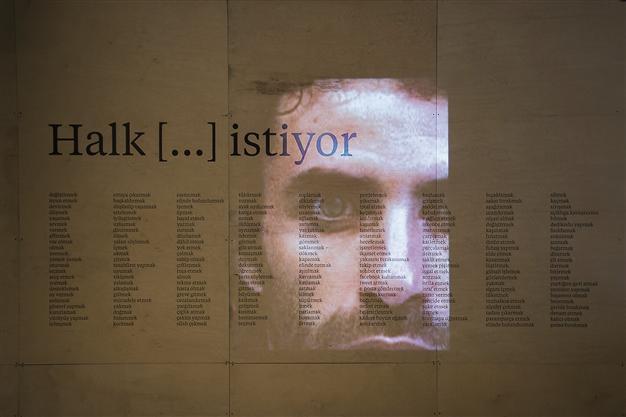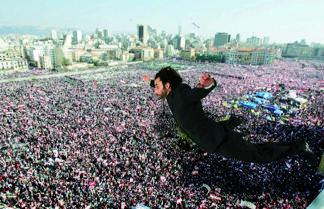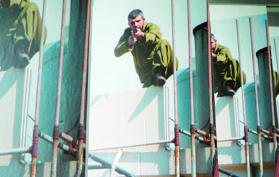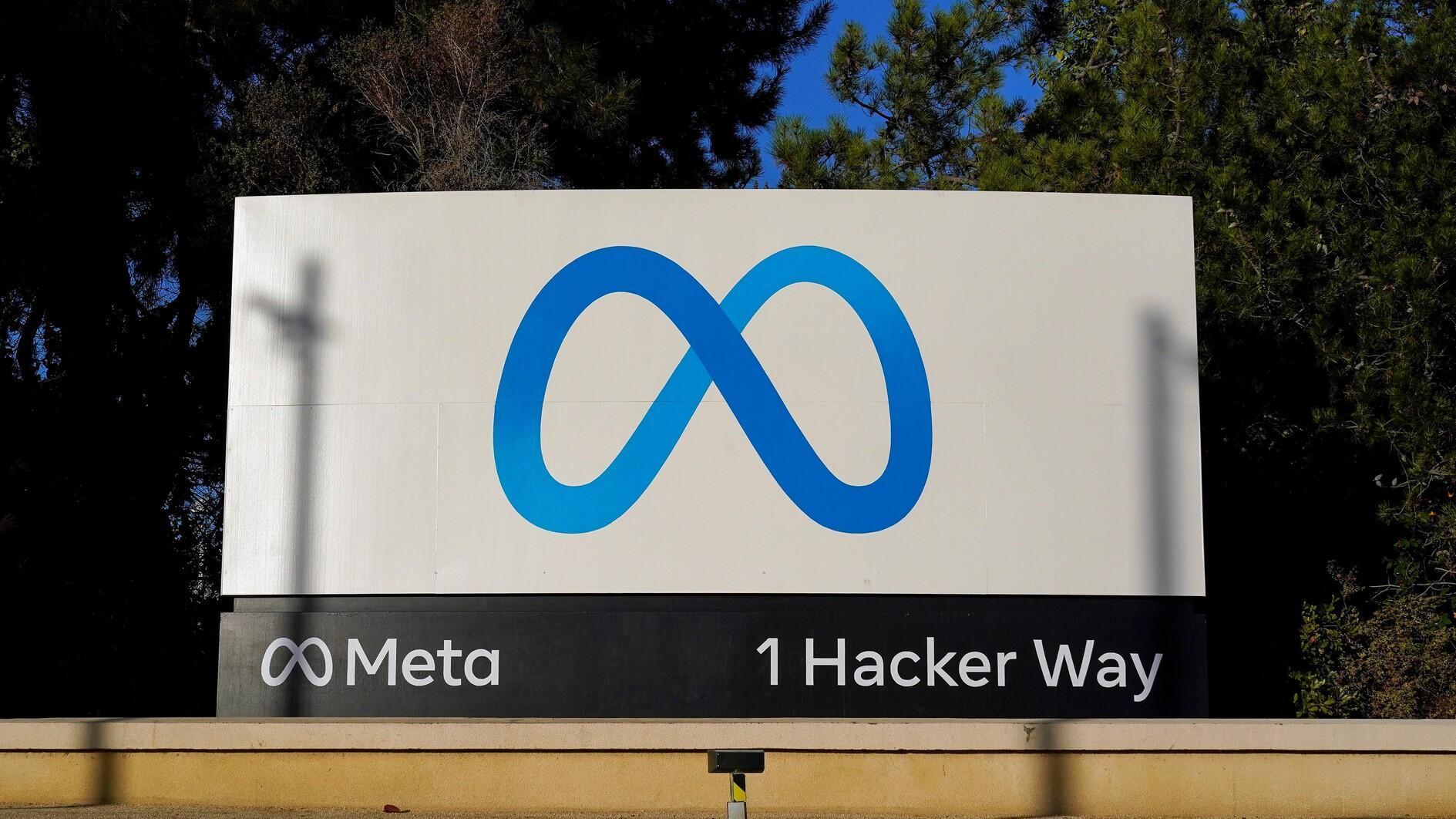Lebanese artist analyze effects of war in region
ISTANBUL

Rabih Mroué’s work questions, problematizes, and examines the use of images, the mechanisms of storytelling and the construction of historical and personal narratives.
SALT is presenting a one-person exhibition of Lebanese artist Rabih Mroué’s works, ranging from his early videos to components from his much-lauded, multi-layered work about the conflict in Syria, “The Pixelated Revolution,” from 2012.An actor, theater director, playwright and visual artist, Mroué belongs to the generation of Lebanese artists that came to prominence in the decade after the official end of the Lebanese Civil War in 1990.
Rooted in the firsthand experience of political unrest and social upheaval still present in Lebanon today, Mroué’s work questions, problematizes, and examines the use of images, the mechanisms of storytelling and the construction of historical and personal narratives.
Informed by his background in theater, Mroué’s works operate between fact and fiction, investigating the role and position of the individual, especially that of the artist within society in times of conflict, crisis, historic changes and their reverberations in the present. His works register and analyze the effects of war, ongoing conflicts in the region, social and political implications of images and representation at large as the foremost agent in the formation of identity and the writing of history.
 The exhibition is spread across SALT Galata and SALT Beyoğlu. While the works at SALT Galata are related to or based on the personal experiences of the artist, and loosely follow a suggested life-cycle, the works that address social discontent, political demonstrations, and social uprisings are presented at SALT Beyoğlu.
The exhibition is spread across SALT Galata and SALT Beyoğlu. While the works at SALT Galata are related to or based on the personal experiences of the artist, and loosely follow a suggested life-cycle, the works that address social discontent, political demonstrations, and social uprisings are presented at SALT Beyoğlu.The first work at SALT Galata, “Old House” (2003) establishes Mroué’s strength in analyzing various forms of control and suppression, and their reversal as his artistic strategy. After the Lebanese Civil War officially ended in 1990, the promulgation of a general amnesty law that pardoned all crimes committed before March 1991, rendering the act of “forgetting the past” an official national policy.
The artist’s rumination on forgetting and remembering is followed by the video “Face A/Face B” and the installation “Grandfather, Father, and Son,” in which the artist and his family’s firsthand experience of the civil war and its tragedy are interspersed with moments of quotidian domestic life, oscillating between the mundane and the extraordinary.
Alluding to the fate of the more than 17,000 people still missing is the video installation “The Mediterranean Sea,” which ends the suggested life-cycle.
 Other half at SALT Beyoğlu
Other half at SALT BeyoğluThe other half of the exhibition, presented on the first floor of SALT Beyoğlu, is composed in direct reference to the building’s location on İstiklal Avenue, a street used often for demonstrations, leading to Taksim Square, a site of political rallies and mass protest.
Taking the concrete political and cultural circumstances of Lebanon as his point of departure, the questions that Mroué raises through his videos, installations, performances and non-academic lectures have much wider resonance—particularly in this time of regional strife and political turmoil, geographical entanglements that inevitably have also involved neighboring Turkey—and his works, like the conflicts he addresses, have garnered attention from around the world.
On May 7, Mroué will present the non-academic lecture “The Pixelated Revolution” at SALT Galata.
Parallel to the exhibition, film and documentary screenings that aim to broaden the issues addressed by the artist in his work will be organized in the Walk-in Cinema at SALT Beyoğlu.
















